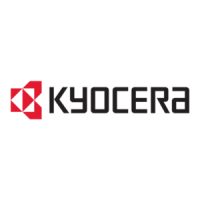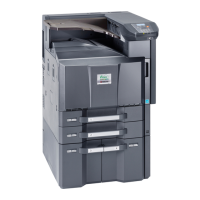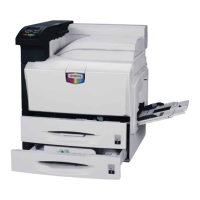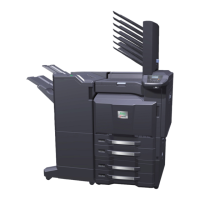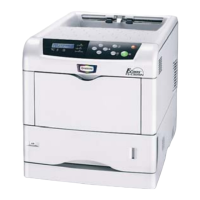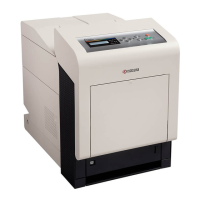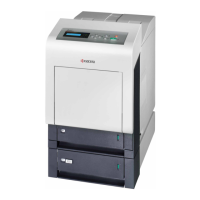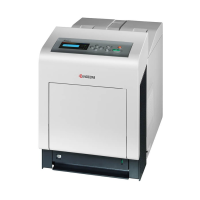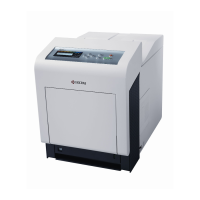Handling Paper 3-7
Whiteness: The contrast of the printed page depends on the whiteness
of the paper. Whiter paper provides a sharper, brighter appearance.
Quality control: Uneven sheet size, corners that are not square, ragged
edges, welded (uncut) sheets, and crushed edges and corners can cause
the machine to malfunction in various ways. A quality paper supplier
should take considerable care to ensure that these problems do not
occur.
Packaging: Paper should be packed in a sturdy carton to protect it from
damage during transport. Quality paper obtained from a reputable
supplier is usually correctly packaged.
Special Paper
The following types of special paper can be used:
Use paper that is sold specifically for use with copiers or printers (heat-
fusing type). When using transparencies, labels, thin paper, envelopes,
postcards, or thick paper, feed the paper from the MP tray. For details,
refer to Paper Settings on page 4-46.
Since the composition and quality of special paper vary considerably,
special paper is more likely than white bond paper to give trouble during
Note You might see the printer emitting steam in the area around
the top tray if you use damp paper, but it is safe to continue
printing.
Paper Type to be Used Paper Type to be Selected
Overhead projector transparencies TRANSPARENCY
Rough paper ROUGH
Thin paper (60 to 64 g/m²) VELLUM
Label LABELS
Recycled paper RECYCLED
Preprinted paper PREPRINTED
Bond paper BOND
Postcards CARDSTOCK
Colored paper COLOR
Prepunched paper PREPUNCHED
Letterhead LETTERHEAD
Envelopes ENVELOPE
Coated paper COATED
Thick paper (120 to 220 g/m²) THICK
High-quality paper HIGH QUALITY
Custom CUSTOM 1~8
